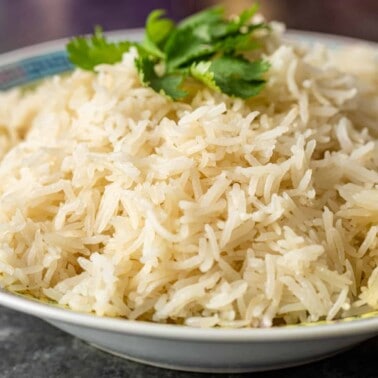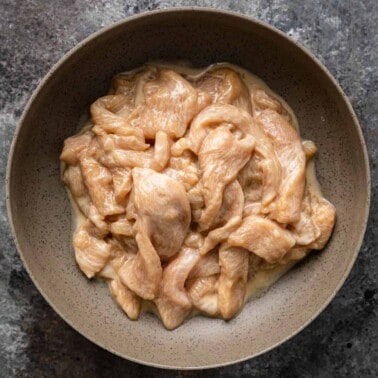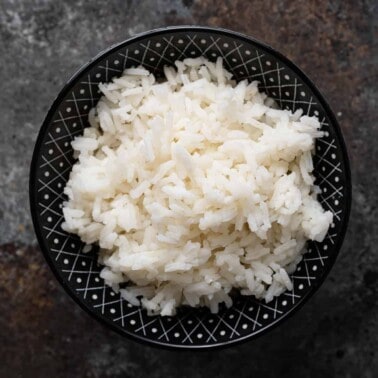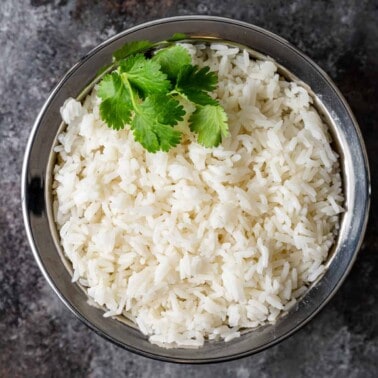Tagine Basics Beginner Guide
In this tagine basics guide, I’ll will cover everything you need to know about buying and using a tagine for the first time.
If you’re an adventurous cook looking to explore new flavors and techniques, a tagine is a fantastic addition to your kitchen. A tagine is not only a cooking vessel but also a traditional North African stew and an entire culinary tradition in itself.

Tagine Basics
What is a Tagine?
A tagine is a traditional North African cooking vessel known for its unique shape, which consists of a shallow, wide base and a conical lid. This design allows for even distribution of heat and the condensation of flavorful steam, making it perfect for slow-cooking and braising.
Material Matters
Tagines come in various materials, each with its own set of characteristics:
- Clay or Ceramic Tagines: These are the most traditional and authentic options. They offer excellent heat distribution but require care to prevent cracking. Seasoning is essential before use.
- Cast Iron Tagines: More robust and easier to maintain than clay or ceramic. They provide excellent heat retention and are versatile for use on stovetops and ovens. Seasoning is still important to protect the surface.
- Aluminum Tagines: Lightweight and budget-friendly. They heat up quickly but may not retain heat as effectively. They’re also easier to handle and clean but might not deliver the same depth of flavor.
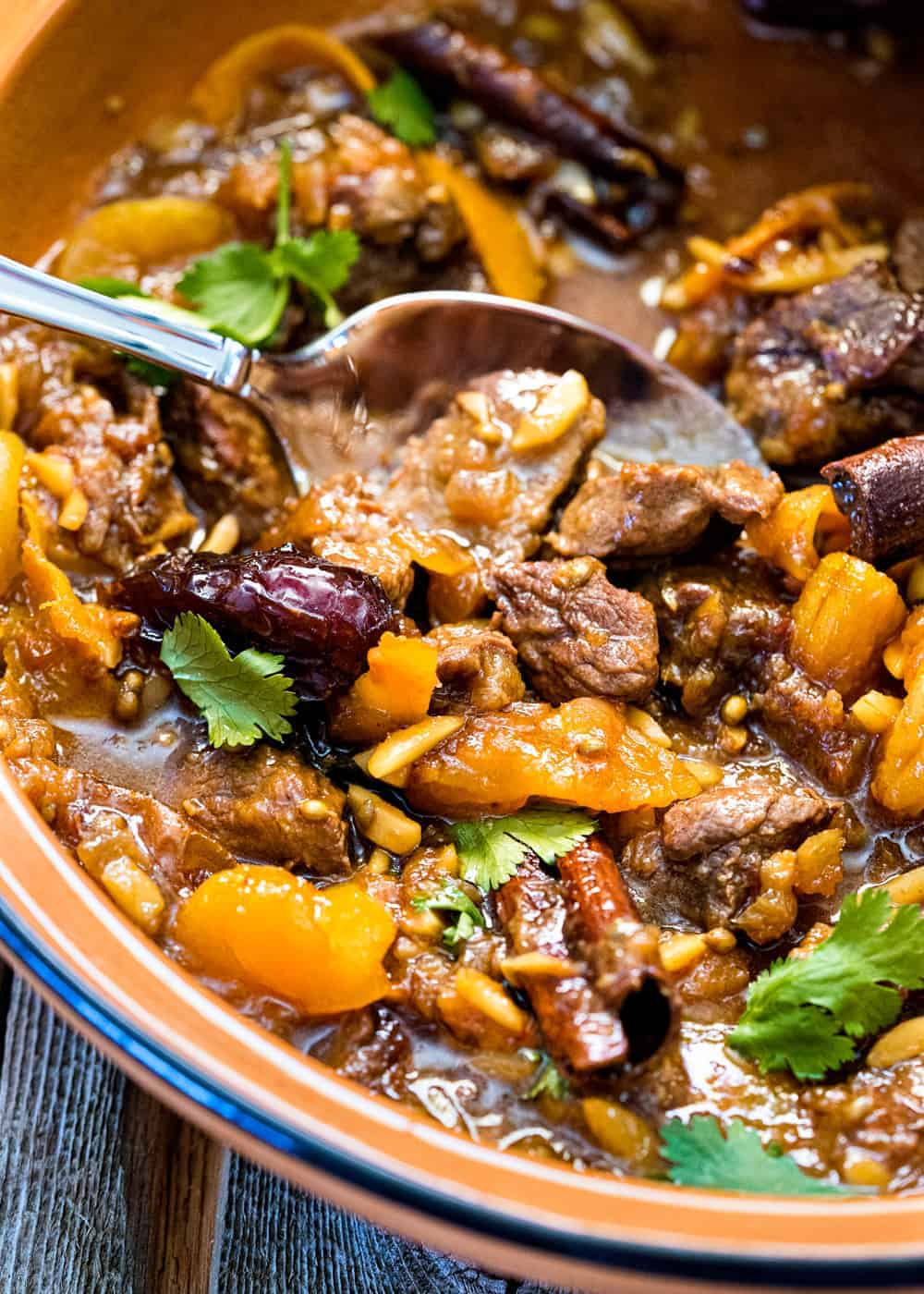
Buying Your First Tagine
Size and Capacity
Select a tagine size based on your usual cooking needs. Smaller tagines (around 8 inches) are perfect for serving 2-3 people, while larger ones (around 12 inches) can accommodate 4-6 servings. Choose a size that aligns with your typical meal requirements.
Design and Aesthetics
Tagines come in a variety of designs and colors, often featuring intricate hand-painted patterns. Select one that complements your kitchen decor and personal taste.
Price Range
The cost of tagines can vary widely, with prices ranging from $30 to $150 or more, depending on size, material, and brand. Investing in a high-quality tagine can ensure better longevity and performance.
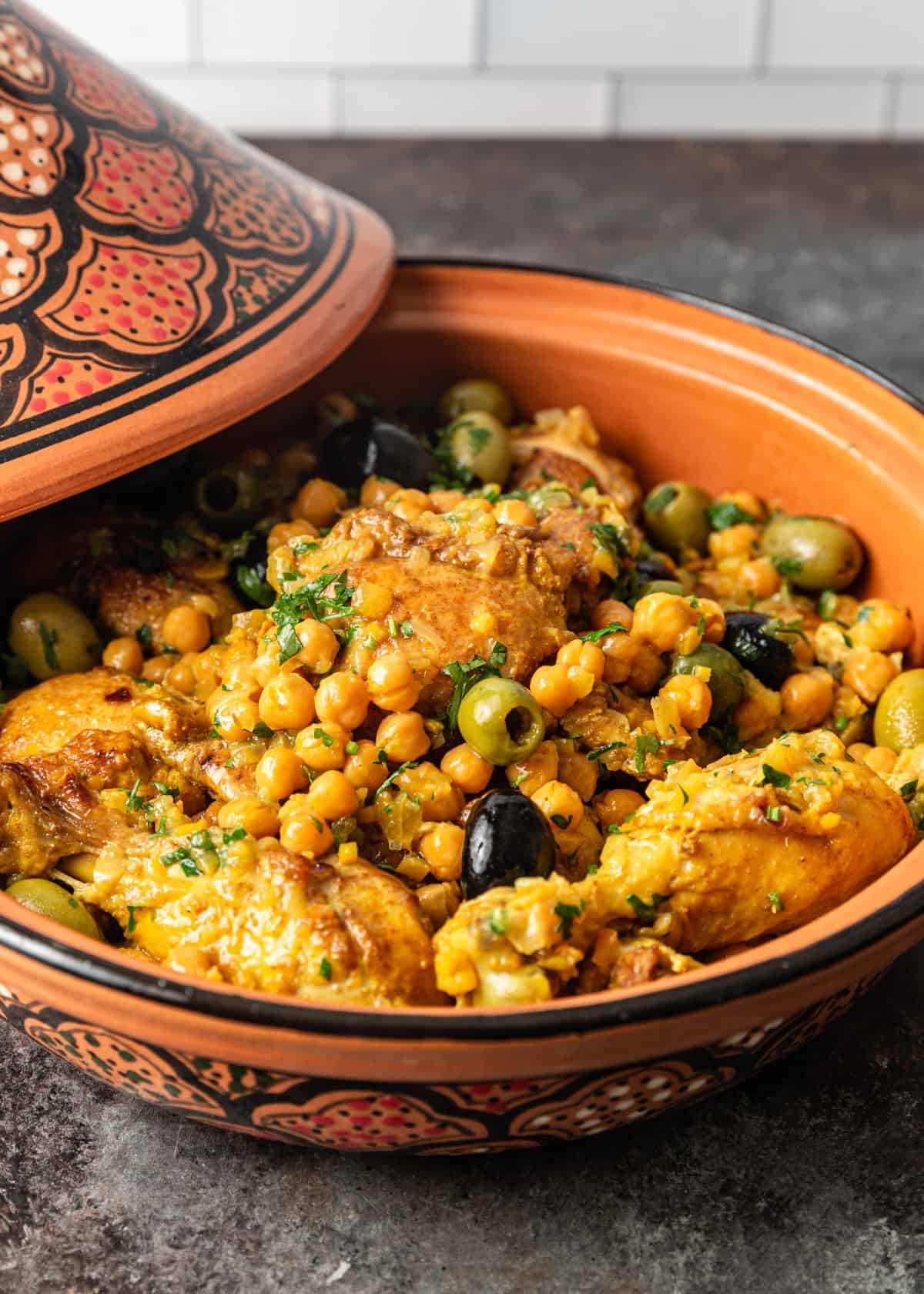
Seasoning and Curing Your Tagine
Properly seasoning and curing your tagine is crucial, especially if you’re using a clay or ceramic one. This process helps strengthen the tagine and prevent it from cracking during cooking.
Seasoning a Clay or Ceramic Tagine
- Soak the Tagine: Place both the base and lid of the tagine in a large pot or sink. Fill it with water until the tagine is submerged. Allow it to soak for at least 2-4 hours or overnight. This step helps the clay absorb moisture.
- Dry Thoroughly: After soaking, remove the tagine from the water and let it air dry completely. Ensure there’s no moisture left on the surface.
- Rub with Olive Oil: Gently rub the interior of the base and lid with olive oil. Use a cloth or paper towel to evenly coat the surface.
- Baking (Optional): To further set the seasoning, you can place the tagine in a cold oven and then set the temperature to 300°F (150°C). Let it bake for 1-2 hours. Turn off the oven and let the tagine cool completely inside. This process helps the oil penetrate the clay, making it more resilient.
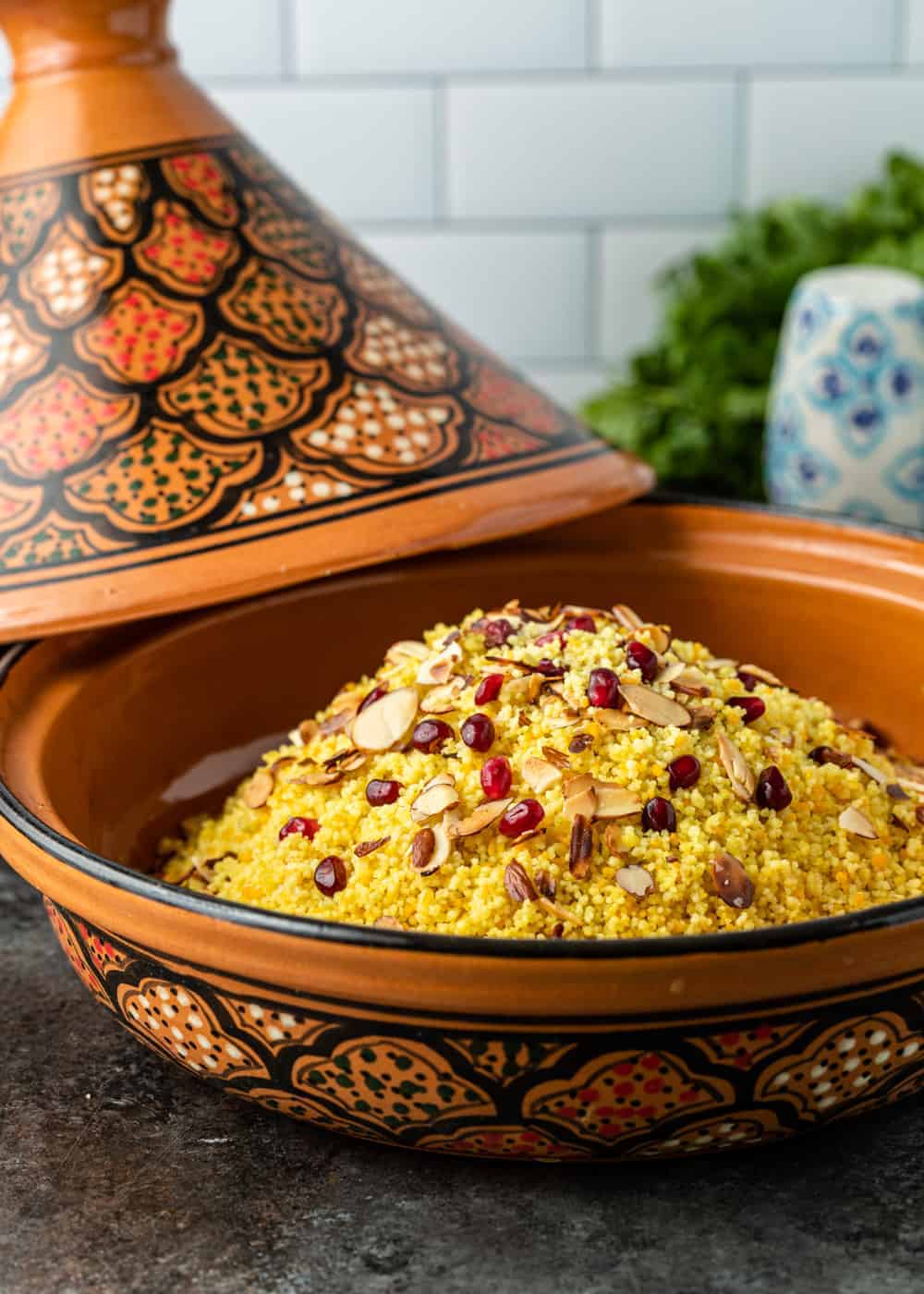
A Heat Diffuser
A heat diffuser is an essential tool when using a tagine on the stovetop, especially with clay or ceramic tagines, as it helps prevent thermal shock and ensures even and controlled cooking.
A heat diffuser is often used when cooking with a tagine on the stovetop for several important reasons:
- Even Heat Distribution: Tagines are traditionally designed for slow, gentle cooking with even heat distribution. The conical shape of the tagine is excellent for trapping and circulating moisture and flavors. However, direct contact with the high heat of a stovetop can cause uneven heating and even hot spots, potentially leading to the tagine cracking, particularly if it’s made of clay or ceramic.
- Preventing Cracking: Clay and ceramic tagines are particularly susceptible to thermal shock, meaning they can crack or even break when exposed to extreme temperature changes. Placing a tagine directly on a hot stovetop burner without a diffuser can subject it to intense heat, which can lead to cracking. The heat diffuser acts as a barrier that disperses and moderates the heat, reducing the risk of thermal shock.
- Controlled Cooking: The diffuser allows you to control the cooking temperature more effectively, ensuring that the tagine maintains a gentle simmer over a longer period. This is essential for achieving the rich and complex flavors associated with tagine cooking.
Share this recipe on Pinterest!
Love this recipe? Share it with the world on Pinterest.
Caring for Your Tagine
To maintain your tagine, here are some essential care tips:
- After Each Use: Wash the tagine with mild dish soap and water. Scrub gently if needed, and rinse thoroughly. Avoid using abrasive scouring pads.
- Avoid Thermal Shock: Never expose your clay or ceramic tagine to rapid temperature changes, such as transferring it from a hot stove to cold water, as this can lead to cracking.
- Drying: Ensure the tagine is completely dry before storing it to prevent mold growth or damage.
- Maintaining Seasoning: Over time, the seasoning on clay or ceramic tagines may wear off. To refresh it, repeat the seasoning process.

Is a tagine pot oven safe?
Yes, many tagines are oven-safe, especially those made from cast iron, clay, or ceramic materials. However, it’s important to check the manufacturer’s guidelines and instructions that come with your specific tagine, as oven safety can vary depending on the type and quality of the tagine.
Here are some general tips for using a tagine in the oven:
- Material Matters: Cast iron, clay, and ceramic tagines are often safe for oven use. Check for any limitations in the product’s documentation. Aluminum tagines may not be suitable for the oven due to their lower heat resistance.
- Temperature Limits: Ensure that your tagine can withstand the oven temperature you plan to use. Many tagines are safe at temperatures up to 450°F (230°C) or higher, but this can vary, so always refer to the manufacturer’s instructions.
- Preheat Carefully: When using a clay or ceramic tagine in the oven, preheat it gradually to avoid thermal shock. Place it in a cold oven, then raise the temperature to the desired level. This gradual heating minimizes the risk of cracking.
- Lid Position: Keep the tagine’s conical lid in the upright position when using it in the oven to allow for proper steam circulation.
- Use Oven Mitts: Remember that both the base and the lid of the tagine will become extremely hot during oven use. Use oven mitts or potholders to handle it.

Tagine Basics – Cooking
Now that you have a seasoned tagine, you’re ready to start cooking. Here are some tips for preparing delicious dishes:
- Use a Heat Diffuser: Place a heat diffuser on the stovetop burner under the tagine. This is essential to distribute heat evenly and prevent direct contact between the tagine and the heat source.
- Choose the Right Burner: Select a burner that matches the size of your tagine’s base to prevent flames or heat from extending beyond the tagine, which could damage it.
- Layer Ingredients: Begin by layering your ingredients in the base of the tagine. Place denser items at the bottom and lighter ones on top to ensure even cooking.
- Lid Position: The conical lid should fit snugly on the base, and it’s designed to capture steam and return it to the dish, creating a self-basting effect.
- Low and Slow: Tagines are meant for slow cooking over low heat. Use a diffuser if you have a gas stove to distribute heat evenly and prevent the base from cracking.
- Flavorful Spices: Tagine dishes are known for their rich, aromatic spices. Common choices include cumin, coriander, cinnamon, paprika, and saffron. Experiment with flavors to create unique dishes.
- Liquid: Add a small amount of liquid, such as broth or water, to create steam and keep the dish moist. Be cautious not to add too much, as the conical lid will return moisture to the dish during cooking.
- Time and Patience: Tagine cooking is a slow and patient process. Most dishes require at least an hour of simmering, and some may take several hours. The result is a tender and flavorful dish.
- Serving: Tagine dishes are often served directly from the tagine onto a communal plate or individual plates. The presentation is as important as the taste.
For great tagine recipes, try my Lamb Tagine with Apricots and Dates, Beef Tagine with Sweet Potatoes Recipe, Cauliflower Carrot Vegetable Tagine and this Chicken Tagine with Chickpeas and Olives!
